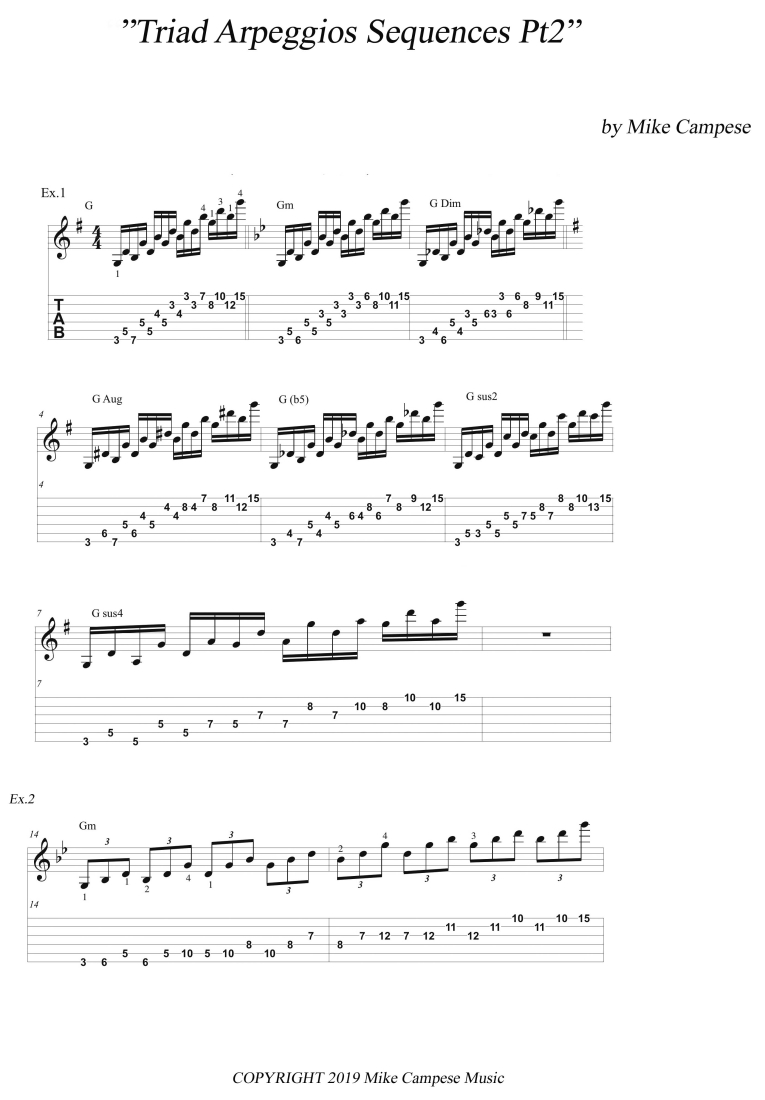Welcome back! I'm writing this on the road in Europe and I have not forgotten about the great G9 readers!
In this lesson I would like to show you some more ways you can make your arpeggios sound more interesting, instead of running up and down them and just playing the notes in order.
The use of arpeggio sequences is a great way to make them sound more unique, and they great for building your technique.
For this lesson we will continue focusing on triad arpeggios (3-note chords) and if you are not sure what an arpeggio is, it is a broken chord. I have covered arpeggios and some sequential patterns in previous lessons. Also, all of these examples are played using alternate picking.
In the last lesson there was an error on the G minor sequence in the third example. In this first example (Example 1) I have a list of common triad arpeggios in G with the same arpeggio sequence, I call up - down. I also included the major from the last lesson, so you have them all. This works in all keys of course.
To play this sequence, you play the first note, skip the second note, play the third note, and then come back down to the second note. For example, G, D, B, G, D, B etc and this same pattern continues throughout the arpeggio. If you don’t know these basic triad arpeggios, it would be very beneficial to learn the formulas and the notes in each one all over the neck. I won’t get too much into the theory, I have covered triads in previous lessons that you may want to check out.
MP3 - Triad Arpeggio Sequences, Part 2 - Example 1 G
MP3 - Triad Arpeggio Sequences, Part 2 - Example 1 Gm
MP3 - Triad Arpeggio Sequences, Part 2 - Example 1 G dim
MP3 - Triad Arpeggio Sequences, Part 2 - Example 1 G aug
MP3 - Triad Arpeggio Sequences, Part 2 - Example 1 G (b5)
MP3 - Triad Arpeggio Sequences, Part 2 - Example 1 G sus2
MP3 - Triad Arpeggio Sequences, Part 2 - Example 1 G sus4
Now for Example 2. In the last lesson we did this sequence in G in one position. Now we will use a little more fretboard real estate, by using the 3-note sequence in a G minor arpeggio, moving up the neck. There are many ways to move up the fretboard like this and it is important to know the notes and formulas to expand this concept. Apply this idea to all different arpeggios that you know. Be sure to alternate pick this and you can experiment with sweeping as well. In my opinion, alternate picking sounds better for this.
MP3 - Triad Arpeggio Sequences, Part 2 - Example 2

That is it for now! Be sure to make up your own arpeggio sequences. Also, don’t forget to visit www.mikecampese.com for more details and to order CDs/Merch.
Mike Campese is an all-around music performer, session artist and teacher competent in many musical styles, electric and acoustic. He has studied at G.I.T. (Honors Graduate), and with Paul Gilbert, Norman Brown, Stanley Jordan, Scott Henderson and Keith Wyatt.